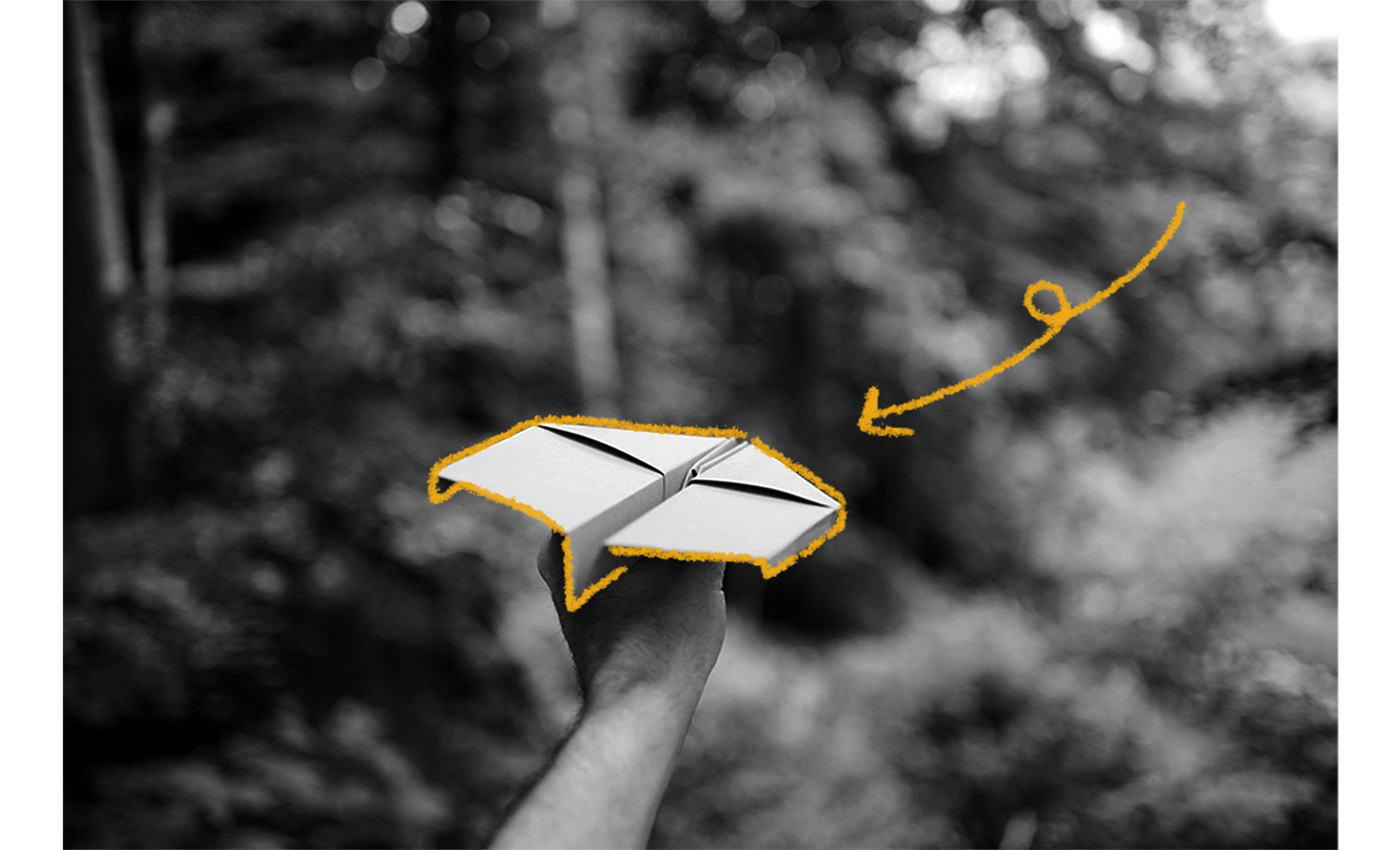The origins of paper airplanes are debated by historians, but we do know about certain touchpoints. The ancient Chinese invented the kite using papyrus paper, Leonardo DaVinci wrote about constructing a flying machine out of parchment, and Sir George Cayley built kite-like gliders out of linen in the early 19th century. Early attempts at constructing flying machines fascinated children and adults alike. The success of the Wright Brothers at Kitty Hawk in 1903 strengthened this interest further and likely contributed to the invention of the paper airplane in 1909. We don’t know much about the first paper airplane beyond this purported date, but we do know that the same principles that make airplanes fly also govern paper airplane flight. In fact, paper’s high strength and density make it similar to the materials used to construct real airplanes, scale-wise. (Notably, Jack Northrup, co-founder of Lockheed Corporation, built flying paper models around 1930 to test certain flight designs!) Paper airplanes have been constructed ever since flying machines became a reality. For example, pop artist Peter Max created an entire book of psychedelic paper airplane templates in the 1970s, a testament to their popularity. Paper airplanes are still created today and have only grown more complex with modern technology. Modern CAD programs allow for exact measurements while today’s advanced printers ensure easy duplication of designs. Engineers have also demonstrated various paper folds, including the bull dart, the hammer, the sky king, the dragonfly, and the record-breaking Suzanne.

Your go-to guide for weird history facts
Subscribe to the FREE daily email that makes learning about history fun.


